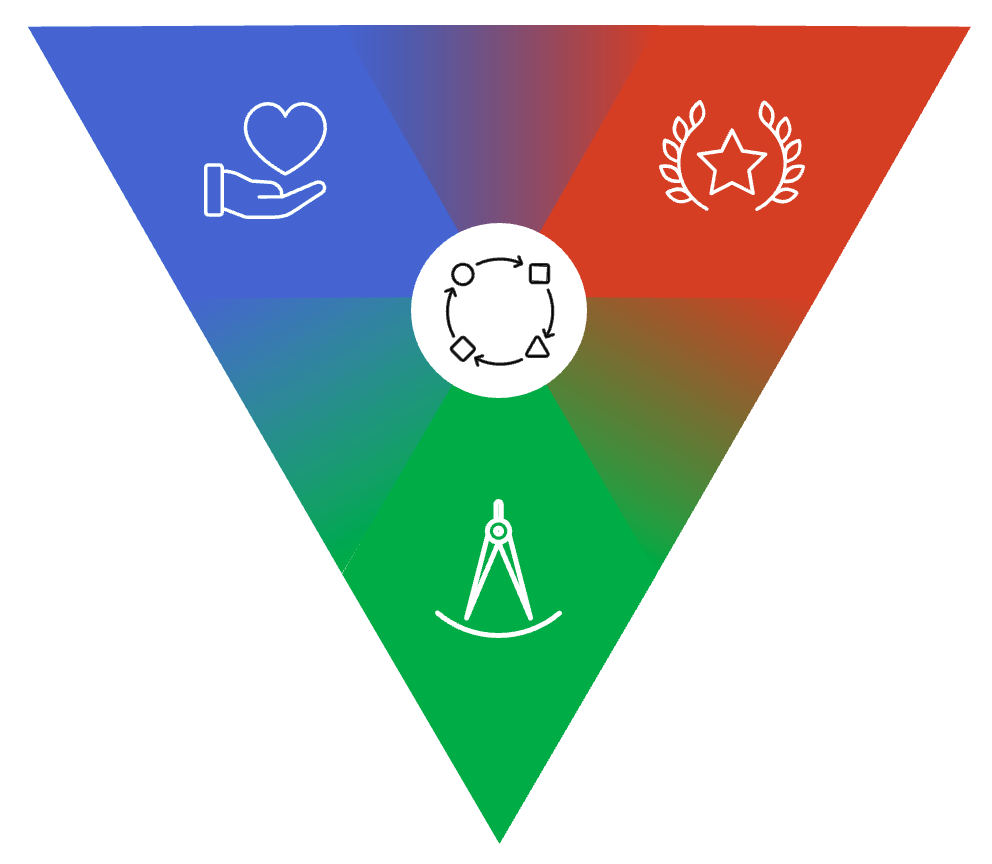Same model. Different humans. Different motives.
How your core work style shapes the way you use GenAI.
At Camino, Strength Deployment Inventory (SDI)* is part of our shared language for how we work and collaborate. Think of SDI as a fabulous colour wheel of core work styles that maps what motivates us when things are going well, and how we adapt under pressure.
GenAI is also part of our everyday toolkit. Do those core values, the ones driving how we talk, decide, and problem-solve, also shape how we prompt, iterate and judge GenAI’s output?
We ran a pilot (N=18) to see if core work style shows up in how you use and value GenAI (GPT-4o)…turns out it does. Whether you’re people-first communicators (blue), process-driven (green), results-focused (red), balance-seeking (hub), or some mix (?!), the model reflects the priorities you bring to the keyboard.

Overview of SDI colours:


So, what did we find?
Unsurprisingly, the colour mix tends to match the MedComms day job. Client Services is heavy on communication and momentum, Scientific Services leans into rigour with delivery pace, Design & Tech thrives on cross-functional build, and Exec/Operations brings the decisive, results-driven energy. So far so good. Well done, Camino recruitment.
Then it gets interesting. At Camino, most people are using GenAI in line with their natural strengths. People-first communicators go to it for drafting, structuring and keeping messages audience-ready, favouring longer, high context prompts. Process-driven types are quite cautious, using GenAI to systematise, verify, and deliver accuracy they can trust, iterating the least and using the shortest prompts. Results-focused styles rely on it for fast, creative momentum and frequent iteration. Likewise, hubs also use it for brainstorming and comparisons.
But it’s not only about leaning in. We also saw hints of people using AI to cover their blind spots. People-first communicators seeking speed and accuracy, and process-driven types valuing a mix of speed and creativity.
Why does this matter for teams?
When we argue about the “best” way to use AI, are we debating about what we value most? People-first communicators optimise for clarity, process-driven types for correctness, results-focused for speed, and balance-seekers for alignment. No one’s wrong, we’re just optimising for different outcomes.
If we want AI to work for everyone, process and training needs to flex for those motives. For example:
- People-first communicators: Build a shared library of high-context prompts that add depth
- Process-driven: Share prompt templates that already include key context fields, plus a “check accuracy” step built into the workflow
- Results-focused: Provide speed-friendly prompt templates and quick-access macros
How can you use this tomorrow?
- People-first communicators: Build a shared library of high-context prompts that add depth
- Match your AI workflow to that intent:
- Speed: short prompt, iterate fast.
- Accuracy: longer prompt, cite sources, verify.
- Creativity: divergent variants, critique, converge.
- Clarity: audience statement, outline, draft.
- Share prompt libraries across SDI colours
Same model. Different humans. Different motives.
At the end of the day, GenAI isn’t rewriting who we are, it seems to be reflecting it back to us. We should embrace that as a feature, not a flaw. You can choose to double down on your strengths or borrow someone else’s approach. And remember, the “best” way to use AI is the one that gets the result you need, in the time you have, for the audience you serve.
GenAI is the most agreeable collaborator you’ll ever meet.
“But isn’t this all just correlation?” we hear you ask. Yes. We did this for fun.
* Crucial Learning. (n.d.). SDI Assessment. Retrieved October 14, 2025, from https://cruciallearning.com/assessments/sdi-assessment/


.webp)






